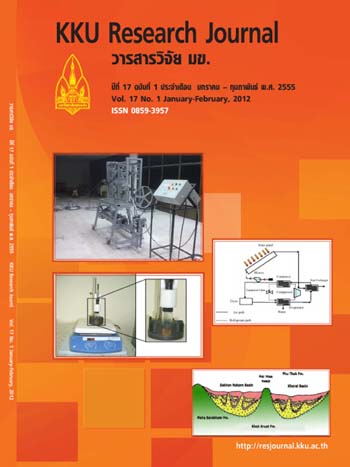Geological map of Phutok formation improvement explored from Potash and Rock Salt drilled holes, topography and outcrops on the Khorat Plateau
Main Article Content
Abstract
Phutok Formation is one of the most significant rock units in Khorat plateau. It is normally cover on the tremendous rock salt of Maha Sarakham Formation. Theoretically, the Phutok Formation should extend widely as a topmost layer of rock on the Khorat platau. However, actually it is normally covered by weathered top soil. Moreover, the Khorat plateau is rather flatted with low and small undulating hill. However beneath the basin, there are complicated rock structures of both Phutok and Maha Sarakarm Formation under the top soil. This is the obstruction to locate where Phutok or Maha Sarakarm are on geologic map on the Khorat plateau. The data from drilled holes are details to tell about the location and extension of Phutok Formation more clearly. On the other hand, if these data are analyzed together with some outcrops and some mountain ranges on the basin such as Phutok, Phu Woa, Phu Sing, Phu Langka etc. in Bung Karn and Nakhon Phanom Province, the geological map on Khorat plateau will be more accurate. The result of the study is found that the extension of Phutok Formation rock unit is broader than in 1:1,000,000 (1999) geologic map of Department of Mineral Resource of Thailand. Meanwhile, the area of Maha Sarakham Formation is limited particularly at the southern basin of Khorat plateau; the extension of Maha Sarakham Formation is not southern beyond the Muun River.
Application for improving this geologic map of Phutok and Maha Sarakham Formation is useful for the next relating researches clearly, for example the study of salt domes, salt basins, saline soil as well as fresh and brine and artesian spring groundwater on the Khorat plateau.


